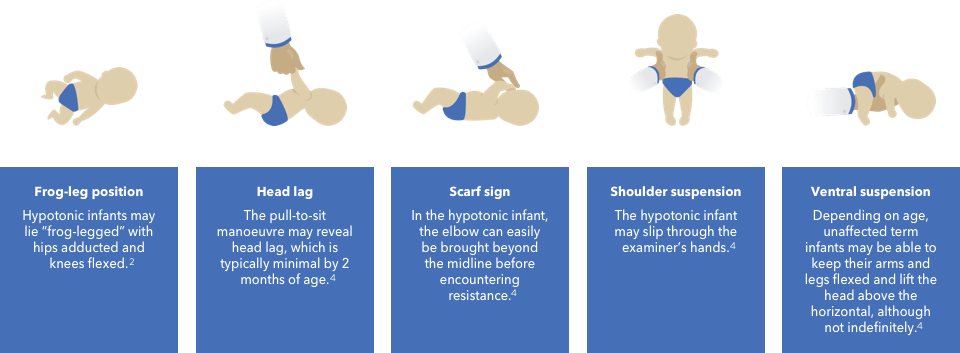


-
Argentina (Español)

-
Australia (English)

-
Bahrain (English)

-
Chile (Español)

-
Deutschland (Deutsch)

-
Europe (English)

-
France (Français)

-
Greece (Ελληνικά)

-
Italia (Italiano)

-
日本 (日本語)

-
대한민국 (한국어)

-
Kuwait (English)

-
Oman (English)

-
Polska (Polskie)

-
Qatar (English)

-
Saudi Arabia (English)

-
Spain (Español)

-
Sverige (Svenska)

-
台灣 (中文)

-
United States (English)

-
UAE (English)

Differential diagnosis of SMA
SMA primarily results from homozygous deletions or mutations involving the SMN1 gene at locus 5q13 of chromosome 5. Patients with other rare neuromuscular disorders that involve mutations in a variety of different genes may have distinguishing clinical characteristics.1
The differential diagnosis of 5q SMA includes,
but is not limited to:1
Spinal cord disorders
- Neoplasms (SMA Types I, II, III)
- Other myelopathies (SMA Types I, II, III)
Other motor neuron diseases
- Spinal muscular atrophy with respiratory distress (SMARD) (SMA Type I)
- Juvenile muscular atrophy of distal upper extremity (Hirayama disease)
- Fazio-Londe disease, Brown-Vialetto-van Laere syndrome
- Other non-5q SMAs (SMA Types I, II, III)
- Juvenile amyotrophic lateral sclerosis (SMA Types I, II, III)
Neuropathies
- Congenital hypomyelinating or axonal neuropathy (SMA Types I, II)
- Hereditary motor and sensory neuropathies (SMA Types I, II, III)
- Chronic inflammatory demyelinating polyneuropathy (SMA Types II, III)
Neuromuscular junction disorders
- Botulism (SMA Type I)
- Congenital myasthenic syndromes (SMA Types I, II, III)
- Lambert-Eaton myasthenic syndrome (SMA Type III)
- Autoimmune myasthenia gravis (SMA Types II, III)
Myopathies
- Congenital myopathies (SMA Types I, II, III)
- Congenital myotonic dystrophy (SMA Type I)
- Congenital muscular dystrophies (SMA Types I, II)
- Muscular dystrophies (SMA Type III)
- Mitochondrial myopathies (SMA Types I, II, III)
- Acid maltase/Pompe disease (SMA Types I, II, III)
- Other metabolic myopathies (SMA Types I, II, III)
- Inflammatory myopathies (SMA Type III)
- Channelopathies (SMA Type III)
Other disorders
- Chromosomal abnormalities (SMA Types I, II, III)
- Prader-Willi syndrome
- Central nervous system abnormalities (SMA Types I, II, III)
- Hexosaminidase A deficiency (SMA Types III, IV)
Learn more about the identification of paediatric neuromuscular disorders at:


Hypotonia in infants
Infants with hypotonia (“floppy babies”) often pose a diagnostic challenge for clinicians because hypotonia may be the presenting sign of both benign and serious conditions. Classic signs may be displayed by hypotonic infants, including:


Facial weakness may be an important clinical sign for differentiating myopathies from muscular dystrophies and SMA.5
- There is typically facial sparing in SMA5
Once the individual has been identified as hypotonic, it may be helpful to know if there is weakness in addition to a tone abnormality or if the individual is hypotonic but normally strong.4
Hypotonia with profound weakness may suggest a lower motor neuron disorder such as SMA.6
Time to diagnosis is critical – earlier diagnosis and intervention may help improve the outcomes for individuals with SMA.7
If you suspect SMA or a neuromuscular disorder in any of your patients, refer to paediatric neurologist for an urgent appointment.
- Darras BT et al. Neuromuscular Disorders of Infancy, Childhood, and Adolescence: A Clinician’s Approach. 2nd ed. London, UK: Elsevier; 2015.
- Leyenaar J et al. Paediatr Child Health 2005; 10: 397–400.
- Peredo DE and Hannibal MC. Pediatr Rev 2009; 30: e66–e76.
- Bodensteiner JB. Semin Pediatr Neurol 2008; 15: 10–20.
- North KN. Semin Pediatr Neurol 2011; 18: 216–20.
- Van Toorn R. CME: Your SA Journal of CPD 2004; 22: 449–55.
- McDonald CM. Phys Med Rehabil Clin N Am 2012: 23: 495–563.
- Rothwell E et al. Am J Med Genet A 2013; 161A: 679–86.
